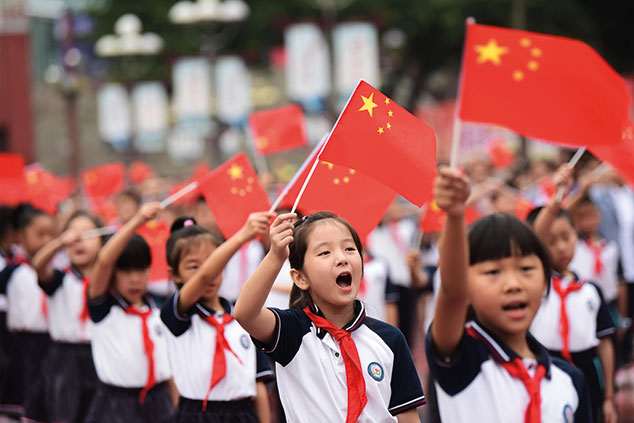
Argentina is at the bottom of the global league, with its Merval index losing 52% in dollar terms this year. It was forced to call in the International Monetary Fund after investors, rattled by high inflation, fled the country – sending the currency, the peso, off a cliff. That made the country’s dollar debt more expensive, as did the overall rise in the dollar. Along with the high rates required to temper the currency’s slide, this squeezed the economy hard.
Turkey suffered a similar exodus, with its stockmarket second to last in the table with a decline of 43%.
Moving on up, we come to the Shanghai Composite index, which fell by almost 30%. Signs of a slowdown in the Chinese economy following a clampdown on lending unnerved investors, while the trade war between the US and China, and its potential ramifications, were a heavy blow to confidence.
Emerging markets, notably Asia’s, are typically more dependent on trade than industrialised countries, with bigger domestic economies. This helps explain why Korea’s Kospi index is also near the bottom of the table. It tracks the blue chips of one of the world’s most open economies.
Bad apples
This turbulent year, however, doesn’t mean emerging markets in general are in crisis. It’s just a case of a rotten apple or two. The most striking feature of the league table is that the countries who did worst are battling specific problems. Investors began to question whether the Argentinian central bank really could contain inflation, while Turkey’s autocratic leader Recep Tayyip Erdogan has been trying to bully the central bank into cutting interest rates, even though inflation is still at a 15-year high of 23%.
Both Turkey and Argentina also have relatively high levels of dollar debt, making them especially vulnerable to higher US interest rates and dollar appreciation.
Not too long ago, all emerging markets had these problems; now, very few do. As Fortune’s Shawn Tully points out, countries comprising 80% of the MSCI index on average hold the equivalent of less than 10% of GDP in dollar debt. Most emerging markets are much better managed now, with inflation under control and government debt averaging less than 50% of GDP, compared with 80%-90% in Europe. The long-term story, moreover, remains compelling. Young workforces and emerging middle classes should power fast growth for years to come. Moreover, emerging markets account for 40% of the world’s growth yet only 12% of global stockmarket value.
What to expect in 2019
Near-term prospects, meanwhile, appear to be improving. Emerging-market growth has cooled to roughly 4.2% year on year as the developed world and China have slowed. But with China set to allow banks to lend more and run a larger fiscal deficit, GDP should come in at around 6.3% this year, only a small dip from this year’s 6.6%, reckons Deutsche Bank. And as Mark Williams of Liontrust Asia Income notes in the Investors Chronicle, dollar strength should abate this year because fewer US interest-rate rises are on the cards. On the trade front “there seems to be an honest attempt to patch up relations between China and the US”.
Even if 2019 doesn’t prove a better year, however, emerging markets are already so cheap it barely matters, reckons Tully. Rampant pessimism means they are on a cyclically-adjusted price/earnings ratio of a mere 12.5, compared with America’s 31. The upshot? As Rob Arnott of Research Affiliates told Fortune, they are “the buy of the decade”.